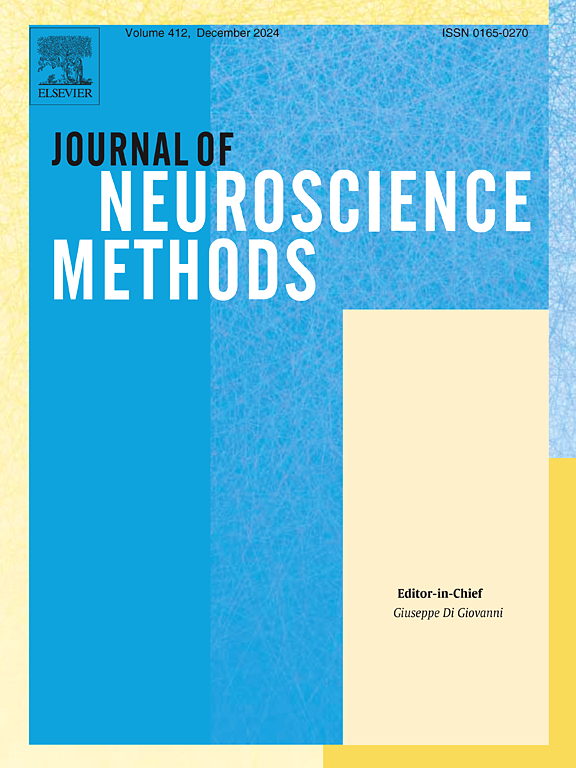Neurocounter - A deep learning framework for high-fidelity spatial localization of neurons
IF 2.7
4区 医学
Q2 BIOCHEMICAL RESEARCH METHODS
引用次数: 0
Abstract
Background
Many neuroscientific applications require robust and accurate localization of neurons. It is still an unsolved problem because of the enormous variation in intensity, texture, spatial overlap, morphology, and background artifacts. In addition, curating a large dataset containing complete manual annotation of neurons from high-resolution images for training a classifier requires significant time and effort. In this work, we presented Neurocounter, a deep learning network to detect and localize neurons.
New method
Neurocounter contains an encoder, a decoder and an attention module. It is trained on images containing incompletely-annotated neurons having highly varied morphology, and control images containing artifacts and background structures. During training, Neurocounter progressively labels the un-annotated neurons in the training data. It detects centers of neuron soma as the output.
Results
Neurocounter's self-learning ability reduces the need for time-intensive complete annotation and ensures high accuracy in the localization of neurons across various brain regions (approximately 94 % F1 score).
Comparison with existing methods
Neurocounter shows its efficacy over the state of the arts by significantly reducing false-positive detection (by at least 3 %).
Conclusions
Neurocounter offers precise neuron soma detection in various scenarios, such as with background artifacts, clutter and overlapped cell soma. This tool can be potentially used to reconstruct brain-wide 3D maps of activated neurons from 2D localization of neurons.
神经计数器-一个用于高保真神经元空间定位的深度学习框架。
背景:许多神经科学应用需要稳健和准确的神经元定位。这仍然是一个未解决的问题,因为在强度,纹理,空间重叠,形态和背景伪影的巨大变化。此外,管理一个大型数据集,其中包含来自高分辨率图像的神经元的完整手动注释,用于训练分类器需要大量的时间和精力。在这项工作中,我们提出了Neurocounter,一个深度学习网络来检测和定位神经元。新方法:神经计数器包含一个编码器、一个解码器和一个注意力模块。它在包含不完全注释的神经元的图像上进行训练,这些神经元具有高度变化的形态,并控制包含伪影和背景结构的图像。在训练过程中,Neurocounter逐步标记训练数据中未注释的神经元。它检测神经元体细胞中心作为输出。结果:Neurocounter的自我学习能力减少了对耗时的完整注释的需求,并确保了在各个大脑区域的神经元定位的高精度(F1得分约为94%)。与现有方法相比,Neurocounter通过显著减少假阳性检测(至少减少3%),显示出其在现有技术水平上的有效性。结论:Neurocounter在各种情况下,如背景伪影,杂乱和重叠的细胞体,提供精确的神经元体细胞检测。这个工具可以潜在地用于从神经元的2D定位重建激活神经元的全脑3D地图。
本文章由计算机程序翻译,如有差异,请以英文原文为准。
求助全文
约1分钟内获得全文
求助全文
来源期刊

Journal of Neuroscience Methods
医学-神经科学
CiteScore
7.10
自引率
3.30%
发文量
226
审稿时长
52 days
期刊介绍:
The Journal of Neuroscience Methods publishes papers that describe new methods that are specifically for neuroscience research conducted in invertebrates, vertebrates or in man. Major methodological improvements or important refinements of established neuroscience methods are also considered for publication. The Journal''s Scope includes all aspects of contemporary neuroscience research, including anatomical, behavioural, biochemical, cellular, computational, molecular, invasive and non-invasive imaging, optogenetic, and physiological research investigations.
 求助内容:
求助内容: 应助结果提醒方式:
应助结果提醒方式:


